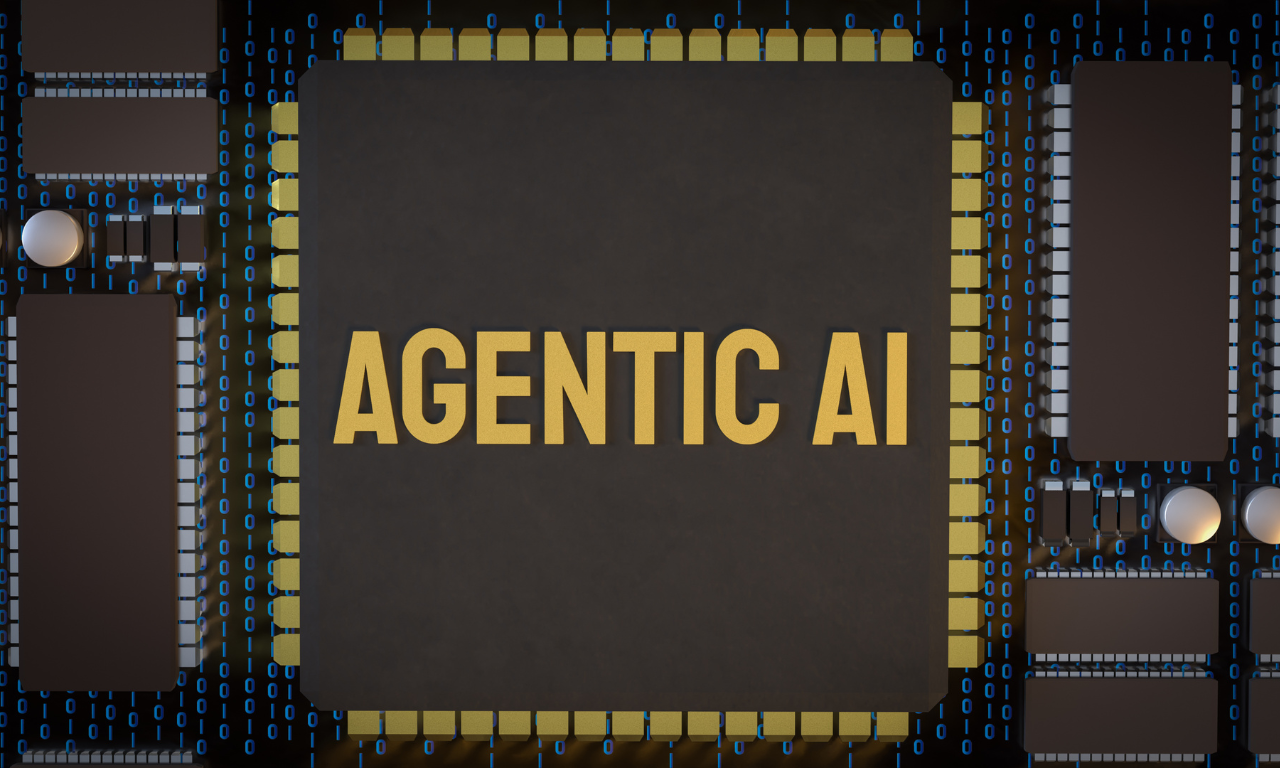How to Build AI Agents from Scratch: Step-by-Step-Guide

AI agents are AI systems intended to have a high level of autonomy in making decisions, taking action, and adapting to the changing environment without being constantly monitored by humans. They feature "agency," which enables them to take independent action, achieve goals, and learn from mistakes. Rational Agents in AI applies these principles.
The AI agent industry is growing faster than you can think! Businesses that use AI are experiencing rapid development and earning way more money than those that do not. So, understanding how to build AI agents is becoming one of the most useful skills you can have.
Let's find out when and how to build one and why it is so important now.
How to build agentic AI: Step-by-step process
Before starting, you need a clear roadmap. Consider it a more practical side of the agentic AI development world, setting the goals, selecting the tools, and training the AI to succeed.
Here’s the breakdown:
Step 1: What you want the AI to achieve
The first step in agentic AI development is to decide what you want your AI agent to do. Then, list the tasks and prioritise the problems it should solve.
Do you need a virtual shopping assistant A chatbot for customer queries? Or an autonomous system design that guides users through product choices?
Define the user type, for example, a doctor will expect a very different experience from a student or an online shopper.
Now, think about where and when the agent will be used. Is it handling complaints? Booking services? Comparing prices? A clear goal leads to good functionality. Therefore, your agent must fit the purpose from day one.
Step 2: Equip yourself with the right tools and frameworks
Once you know what you want your AI to do, pick tools that match your needs. A good AI agent architecture needs:
-
Machine Learning Frameworks: Use machine learning frameworks like TensorFlow or PyTorch to train your models. If your AI needs to integrate with other systems, focus on Agent tool integration (e.g., APIs, web scraping, memory).
-
Natural Language Processing (NLP): Incorporate libraries such as spaCy or Hugging Face Transformers to make LLM-powered agents.
-
AI Orchestration Frameworks: Use AI orchestration frameworks (like LangChain, CrewAI, or AutoGen) to manage complex workflows and interactions. For visual tasks, tools like OpenCV and Keras with pre-trained models can help your AI "see" things better.
Learn how multiple agents coordinate efficiently in our guide on Multi-Agent Planning in AI.
Next, think about where you’ll run your AI:
Decide between on-premise, cloud, or edge computing based on your scalability and latency requirements. Cloud platforms like AWS, Azure, or Google Cloud are flexible and easy to scale.
Edge computing is great if you need fast, real-time decisions, and on-premise is best when data privacy is a big concern.
Pick an IDE that makes coding and testing faster. To handle data, tools like MongoDB or Apache Kafka can keep everything running smoothly.
Step 3: Source and clean your data for use
High-quality data is the foundation of agentic AI development. Collect data that reflects the interactions your AI agent will have. This may include:
-
Text Transcripts: Chat logs, support tickets, or emails relevant to the agent's functions.
-
Voice Recordings: Audio data to train agents that handle spoken interactions.
-
Interaction Logs: Historical data from similar systems to understand user behaviours.
Preprocess the data by cleaning (removing errors and inconsistencies) and labelling (annotating data with relevant tags) to prepare it for training.
Step 4: Choose the right machine-learning model
The core of decision-making AI models is its learning model. You must pick the right approach to suit your tasks.
-
Neural networks mimic how the brain works and are excellent for recognising patterns and processing natural language.
-
Reinforcement learning lets the agent learn through trial and error, improving with feedback. This is great for decision-making tasks.
Selecting the right model impacts how well your AI agent can plan and reason, which are the key parts of AI planning and reasoning.
Step 5: Train your AI agent
Training is one of the most important steps to building AI agents where your AI agent learns from the data.
-
First, get your computer ready with the right software. Load your clean and labelled data, then split it into two parts: one for training and one for testing.
-
Start training your model by changing settings like how fast it learns and how much data it looks at at once.
-
Watch how well it’s doing. If it’s not getting better, adjust the settings or use more data.
Step 6: Test and validate the AI Agent
Testing is key to making sure your AI agent achieves its goals and performs reliably.
Put the agent through real tasks to evaluate how accurate, fast, and seamless it is. Some common testing methods include:
-
Unit testing to check individual parts
-
User testing involving actual users
-
A/B testing to compare different versions
Be careful of overfitting, i.e. when the model performs well on training data but struggles with new data. This issue can be prevented by cross-validation.
Gather feedback from users to identify and fix weaknesses. Continuous improvement is essential for building intelligent assistants that truly support users.
Understand how businesses optimize decision flows using Cognitive Automation.
Step 7: Deploy the AI agent and watch it work
After testing, launch your AI agent where people can use it—on your website, app, or voice assistant.
Make sure it works well with your existing systems. Watch how it performs carefully. See if it understands questions and manages tricky conversations smoothly. Smooth AI Integration is critical for real-time agent orchestration.
Use live tools to track how fast it responds and how often it succeeds. Gather user feedback and error reports to make it better over time.
Remember, deployment isn’t the finish line. Keep improving your AI agent with AI task automation tools and feedback to make sure it stays helpful and reliable.
Step 8: Keep improving through regular checks
Your AI agent needs to grow as your needs change.
Keep an eye on important numbers, like how quickly problems get solved and how accurate the AI is. Listen to your team’s feedback about the AI’s suggestions and make changes when needed.
Keep improving your workflows and updating the AI models often. This way, your goal-based AI engineering stays useful and helps you reach your objectives.
When should you build AI agents?
You should think about building an AI agent when your business has repetitive tasks, too many customer queries, or processes that take a lot of time and effort. AI agents work 24/7, handle multiple tasks at once, and give fast responses.
-
Multi-agent system setup: If your work involves complex decisions or teamwork between multiple AI agents, consider using a multi-agent system setup. This lets different agents manage different parts of a task while working together like a smart team.
-
Generative agent programming: For tasks that need creative or flexible responses, like writing emails, generating reports, or planning workflows, you can use generative agent programming. These agents can learn, think, and come up with new ideas, just like a human assistant.
-
Human-in-the-loop AI systems: In some cases, you may still want a person to make the final decision. That’s where human-in-the-loop AI systems are useful. The AI does the heavy lifting, and a human steps in when needed. This works well in fields like healthcare, finance, and law.
Human-in-the-loop applications are particularly vital in regulated industries like AI in Finance.
Challenges to overcome when building your own AI agent
Building AI task automation tools sounds exciting, but here are a few challenges that might sneak up on you:
-
It's the classic "garbage in-garbage out" syndrome. To be able to make decisions, the facts must be reliable without any bias.
-
Picking the right AI agent architecture isn’t always easy. Some models are incredibly smart, but try explaining how they work, and it feels like decoding alien tech.
-
If your AI wants to work in real-time, you'll need to strike a balance between speed and accuracy.
-
Agent tool integration can be complicated. Getting diverse agentic ai tools to work together seamlessly requires time and effort.
-
AI agents require constant monitoring and updating to avoid performance drops or outdated behaviour.
-
People won’t trust what they don’t understand. So, be clear, be open, and make sure there’s a human around to step in when it really matters.
Why are AI agents becoming increasingly important?
AI agents have become a necessity for businesses today. Studies show that the use of McKinsey claims that automation driven by AI boosts productivity by 25%[1].
These smart-systems complete repetitive work, answer queries of customers, and do not take breaks. They provide services much faster, which makes customers happy.
They keep down the number of errors and allow employees to work on something more rewarding. With the increasing improvement in AI technology, companies using AI agents stay ahead of their competitors in terms of time and money. See how AI and Business combine to drive enterprise value.
Final thoughts on building AI agents
Looking to take your business to the next level? Building AI agents is a smart way to do it. These intelligent systems can handle tasks on their own, helping you boost efficiency, improve customer experience, and scale AI revenue as your organization grows.
With tools like generative agent programming and custom AI workflow builders, you can create powerful, self-running solutions that fit right into your product management process.
As a startup incubator we help businesses from enterprises to early-stage teams in building AI agents that align with their goals.
Partner with GrowthJockey to unlock the full potential of AI and drive your business forward.
FAQs on how to build AI agents
-
How can I create an AI agent of my own?
First, establish its goal, choose the best AI tools and frameworks, collect high-quality data, program its decision-making, test it very much, and continuously improve it based on feedback and results.
-
Which five categories of AI agents exist?
The five categories are learning agents, goal-based agents, utility-based agents, model-based reflex agents, and basic reflex agents. Their decision-making processes and levels of complexity vary.
-
Is it possible to create your own AI?
Yes, you can build your own AI by learning how to program, choosing appropriate algorithms, collecting data, developing models, and implementing.
-
How may an AI sales representative be created?
Determine which sales processes need to be automated, design conversational flows, utilise natural language processing, integrate CRM and data sources, train sales data, test with real users, and lastly, optimise for better performance.








